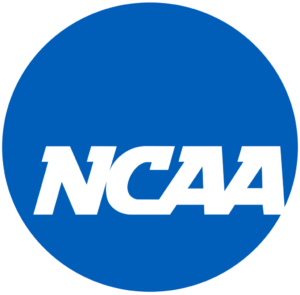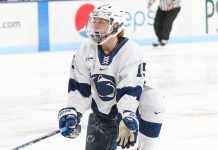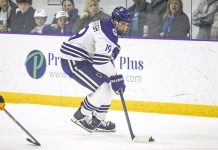 An NCAA Men’s and Women’s Ice Hockey Rules Committee proposal to extend a review option to game misconduct penalties was approved Wednesday for the 2025-26 season.
An NCAA Men’s and Women’s Ice Hockey Rules Committee proposal to extend a review option to game misconduct penalties was approved Wednesday for the 2025-26 season.
Last season, a conference was able to request a review by the NCAA secretary-rules editor and national coordinator of officials for possible adjustment. This process was used rarely, but in those instances, it was successful and corrected a handful of decisions.
Committee members think this should extend to the game misconduct penalties, which have a progressive component and essentially the same rationale of fairness to the player.
The NCAA Playing Rules Oversight Panel approved the change today.
PROP approved three other ice hockey proposals for the 2025-26 season:
Face mask penalty
Adjustments to the face mask rule’s penalty structure include:
— A minor penalty for intentionally placing the hand on the mask and pushing the face mask of an opponent.
— A minor penalty for moving an open hand back and forth across an opponent’s face mask (previously a major penalty).
— Major penalty and either a game misconduct or game disqualification at the referee’s discretion for a player grasping and pulling or twisting to control an opponent’s face mask.
Major penalty review options
When the on-ice officials are planning to enforce a major penalty, a replay review must be conducted in games that have instant replay. The panel approved adjusting the rule regarding video reviews of major penalties.
After the review, on-ice officials will have three options:
— Confirm a major penalty.
— Reduce the major penalty to a minor penalty.
— Remove the penalty completely, if warranted by the video review.
Teams are not permitted to challenge the result of the review.
High-sticking the puck
The panel approved clarifying the rule on high-sticking the puck by separating the scoring of a goal (puck may not be played higher than 4 feet, which is the height of the crossbar) and all other plays (puck may not be played higher than above a player’s shoulder, which is defined as that player’s normal standing height). This is an adjustment from last season, when the rule did not include the “player’s normal standing height.”


